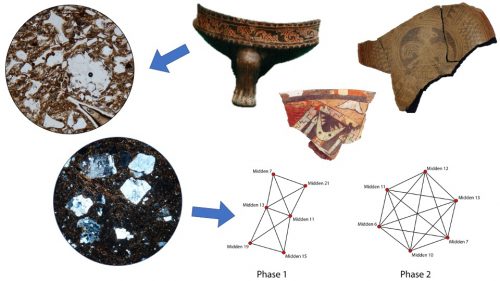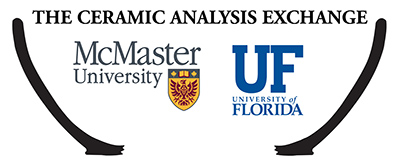The Ceramic Analysis Exchange is a collaborative effort between students and faculty from the Laboratory for Interdisciplinary Research on Archaeological Ceramics (LIRAC) at McMaster University, and the Ceramic Technology Lab (CTL). These meetings provide an opportunity for researchers to share ideas and discuss methods and theory related to ceramics in an informal setting. We are pleased to open up our meeting to everyone who’s interested at 1:30pm EST on December 18th, where we will have Andrea Torvinen as our guest speaker.
Abstract: Ceramic characterization studies often depend on estimates of similarities and differences in assemblages drawn from relatively small samples to address questions regarding a range of social patterns and processes. In most cases, such characterizations do not consider uncertainty due to sampling error nor do they consider in detail the relationship between characterized samples and whole assemblages. We (Torvinen and Peeples) introduce a method that allows ceramicists to extrapolate plausible values and ranges for ceramic diversity and similarity values between contexts based on limited observed data (i.e., petrographic fabrics or chemical reference groups) using a Monte Carlo simulation. We use this method to evaluate the spatiotemporal consistency of ceramic production among potters at the West Mexican center of La Quemada, Zacatecas. Our study relies on a relatively small petrographic sample of 297 sherds (2.86% of site assemblage) belonging to 19 pottery types, each having been assigned to one of four fabric classes. Using these data with site-wide ceramic frequency data, we generate estimates and error ranges of the plausible similarities between contexts across the site in terms of shared fabrics that crosscut ceramic types. We suggest that this methodology has wide-reaching applications at various spatial scales and using different types of characterization data.
Please register in advance for this meeting:Zoom Registration

